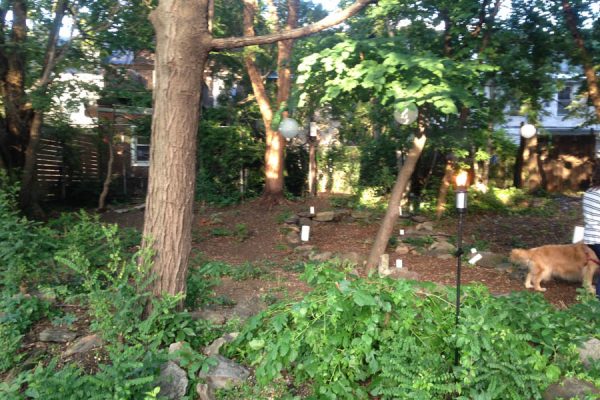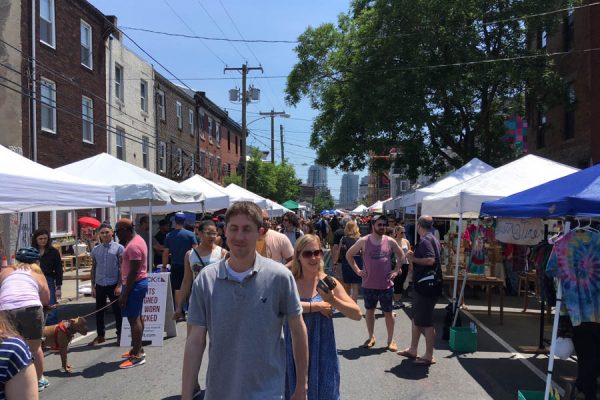A Fish Out of Water: Spirit Reporter Discovers Another Fishtown Across the Pond (Part 3)
SOLUTIONS, DISSENTING VOICES AND CULTURAL OWNERSHIP
Despite the varying levels of affordability and overall differences in the sustainable economic climate of both Fishtown and Shoreditch noted in last weeks (Fish Out of Water Part 2), many whom we spoke with believe these communities are prime examples of how people work together to create the essence of a neighborhood. In addition people noted that communities like these are needed on a fundamental level because of the way they are able to help guide society at large.
The way these communities often look to guide our society is through their dissent.
President Deight D. Eisenhower once described “dissent” as inherent within American culture.
“Here in America we are descended in blood and in spirit from revolutionists and rebels – men and women who dare to dissent from accepted doctrine. As their heirs, may we never confuse honest dissent with disloyal subversion,” said Eisenhower.
Despite Ike’s heartfelt patriotic characterization of “descent” the phrase “dissenting voices” however is one that over the years is sometimes confused, not fully understood, and in conversations about communities is often not invoked for fear of upsetting the status quo.
Through this series of stories though it’s clear that time and time again when offered the status quo Fishtown and Shoreditch often opted to reinvent themselves, staying vibrate and taking on an entirely different approach to community.
However the most basic components of the phrase dissenting voices remain murky at best. When pressed for a definition one will find some variation in meaning that includes straying from the beaten path of authority and utilizing speech in some form to do so.
Regardless of how general the definition it still paints a focused clear picture of what the communities of Fishtown and Shoreditch offer to the rest of the world, a vigilant dissenting voice on issues and culture within the larger spectrum of modern global society.
One facet making up the dissention within both Fishtown and Shoreditch is how the communities, to a certain extent, exist within an alternative economic landscape.
Nadia James, a former Shoreditch resident and current Fishtown resident, believes that the fashion and art sectors of these neighborhoods contribute to their environment of independent sustainability.
“It’s not going to be a Forever 21 that has a small up-and-coming artist have a pop up shop in the community, it’s going to be another independent boutique owner,” said James. “So you need those small small local businesses there to sustain each other.”
Across the pond in the UK , professor, writer, and filmmaker Kirsty Allison also sees those same sustainable independent economic models as prevalent elements of their developing community culture in Shoreditch.
Allison’s recent article published in The Guardian entitled “The Cultural Revolution Starts Here” discuss particulars of how many in the Shoreditch see themselves as a part of a more all encompassing economic, political and social movement, dissenting against status quo power structures.
“East London was the first zone to co-opt creative people into its ‘regeneration’ program[me]. The current phase witnesses remaining native communities and cultural migrants rebelling against economic apartheid, creating an urban laboratory of flexible arts spaces for symposiums, screenings, street-food festivals – anything really … IF YOU’VE GOT NOTHING, THERE’S NOTHING TO LOSE is painted high by artist-in-residence, Chris Bianchi of Le Gun,” wrote Allison in The Guardian.
Back in Philadelphia, resident Jen Cleary believes art is what drives the multifaceted discussion fueled by these dissenting voices. She feels it furthers those conversations outside the community as well, and into a dialogue within broader society.
Cleary is a photographer and spends a lot of time in Fishtown and other areas of the city photographing street art. Earlier this year she also took a trip to Shoreditch to experience the street art like the piece mentioned by Allison above, among many others.
She focuses on street art’s unique ability to embody dissenting voices through a medium of social and political commentary that seeks to derive the impetus for societies structural change and progression.
“It comes from a place of rebellion, its the art of rebellion really, and being able to say something through a visual medium,” Cleary said.
Cleary notes that important issues throughout history were brought to the forefront of society’s collective consciousness through foundations laid by street art in years past, which continue to influence other street arts projects today.
“In the 80s [prominent gay-rights activist and artist] Keith Haring had a lot of things to say about how gay men were treated during the HIV Crisis in New York. It was huge,” said Cleary. “And now were talking about people in Shoreditch and how they really don’t think the Tory Party [UK’s conservative political party] treats them well.”
Creativity particularly in the form of street art in Cleary’s view invites people from all walks of life in a simple emotionally powerful manner, to question the world around them and look for solutions within themselves to help solve society’s complex problems. She also sees how similar forms of street art to those mentioned during the 80’s HIV Crisis are represented through different forms of creativity in Fishtown, depicting today’s pressing social issues.
“At one point there were these little cat calls that were on the ground, and you would find them at every bus stop,” Cleary said. “As a woman that kinda shit can happen to you a lot. They were just little pieces of art spray painted on the ground with a stencil that would give you little things that you could say back to Catcallers. It was good to see, it lets you know that you are not alone and it wasn’t just you. And it opened up the dialogue.”
“The funny thing is that it became a city-wide action to place anti-catcalling signs on all SEPTA transit. So its always a political statement, which we need we always need. Every society needs a dissenting voice.”
Street art may be providing a dissenting voice in these hip communities. According to Conrad Benner, a local photographer, these voices are even more dignified in areas like Fishtown because the artists live within the community and respect it. While some may interpret street art as vandalism, the artists who create it do so in a way that is beautifying and thought provoking.
“I think one of the greatest things about artists that live in Philadelphia is that by and large they pay respect to people’s private property and to businesses,” said Benner. “So when they put up a wheat paste and a sticker or some stencils, generally speaking, it’s on abandoned spaces which are sort of abundant in Fishtown. So it’s exciting to watch.”
Robert Beamer lives in a formally abandoned warehouse in Fishtown that has since been converted into creative living space. Beamer agrees with both Cleary and Benner in that the development of dissenting voices along with creativity’s place in that process is not only exciting to watch, but even more inspiring to be a part of.
“Living in a building where every other apartment is filled with other artists, the ability to bounce your ideas off people, to throw a flyer on the wall and know that people are going to see it, it lends itself to creativity.”
In the eyes of those living there, places like Fishtown and Shoreditch are communities that celebrate their residents and the lives they lead. In addition they often function as an olive branch extending the impetus for societal progression in one form or another to those the world over.
Still many questions face these communities today. How do we keep these communities functioning in a manner that benefits all who are apart of them, along with continuing their substantive and positive impact on global society, rather than benefiting just a few?
How can we ensure that vibrant and necessary communities like these will stay at arm’s length from people only looking to take advantage of their message by commodifying the “merchants of cool” surrounding the fabric of the community?
How can we know that 20 years or more from now places like Fishtown and Shoreditch will still remain viable and sustainable for all people?
Having lived in Shoreditch and now calling Fishtown home, James feels she knows part of the answer.
“I think you need a balance. I think Fishtown does that really well. For example you can have the bigger establishments but then you can have a small, little Indian restaurant like Ekta,” said James. “Most of the companies I have seen, they all came up because other people helped them. They understand the value of helping other people, playing it forward, and giving back.”
In Shoreditch Allison agrees with the principle of balance in theory, but offers advice seeing changes play out in her community within a somewhat uneven landscape filled with a seemlinging endless amount of individual interpretations.
“Everyone has their own narrative about what has happened. I don’t know if I am into mass sweeping generalizations about do’s and dont’s for anyone but this idea of ownership is where all the problems start. But what is ownership? Is it a financial investment, or is it creative ownership? So that goes back to the idea of the social and cultural economy. How do you measure those though?” said Allison.
Allison sees cultural ownership as an element that factors heavily into the complicated equation of keeping communities sustainable, but still senses an innumerable amount of questions about how to quantify the concept.
“Do you do it by the amount of time you invest into something, do you go Malcolm Gladwell and say it has to be 20,000 hours you put into Shoreditch to make yourself part of Shoreditch? How does that work?” said Allison. “I think that people still need a space to be a part of the community, and to have a space that is a long term investment. That would be a really radical thing to do.”
Beamer in Fishtown believes what Allison advocates for should not necessarily be such a radical decision, but unfortunately in our modern global society it is. That being said, Beamer recognizes that sustainability is in fact the most sensible choice to make.
“You need to stick around the neighborhood that you helped create, and we should learn from those mistakes and missed opportunities of other cities,” said Beamer. “There has to be some sort of a fusion between making a lot of money from these spaces and keeping them around.”









